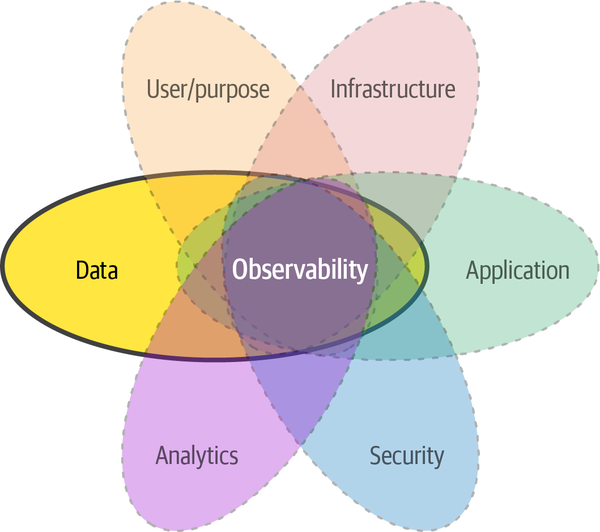Chapter 2. Components of Data Observability
As introduced in Chapter 1, data observability is an area of (IT) observability intersecting with other areas, such as applications or analytics. In this chapter, we will cover how data observability and its interactions, shown in Figure 2-1, can be added to a system.

Figure 2-1. Areas of observability intersecting data observability area
As discussed in Chapter 1, data observability gives observers a broader spectrum of observations to interpret a system’s internal state by combining all its areas. However, this combination can become a challenge itself if some precautions are not respected. This chapter will give you a deeper understanding of what observations are and what they should contain.
This chapter presents the three foundational components of data observability: the channels where observations are accessible, the observation model describing the structure of the observations, and finally, the expectations providing proactive capabilities to your data system.
Channels of Data Observability Information
The first component of data observability is the channels that convey observations to the observer. There are three channels: logs, traces, and metrics. These channels are common to all areas of observability and aren’t strictly linked to data observability.
The following sections will define each of the three main channels of ...
Get Fundamentals of Data Observability now with the O’Reilly learning platform.
O’Reilly members experience books, live events, courses curated by job role, and more from O’Reilly and nearly 200 top publishers.

